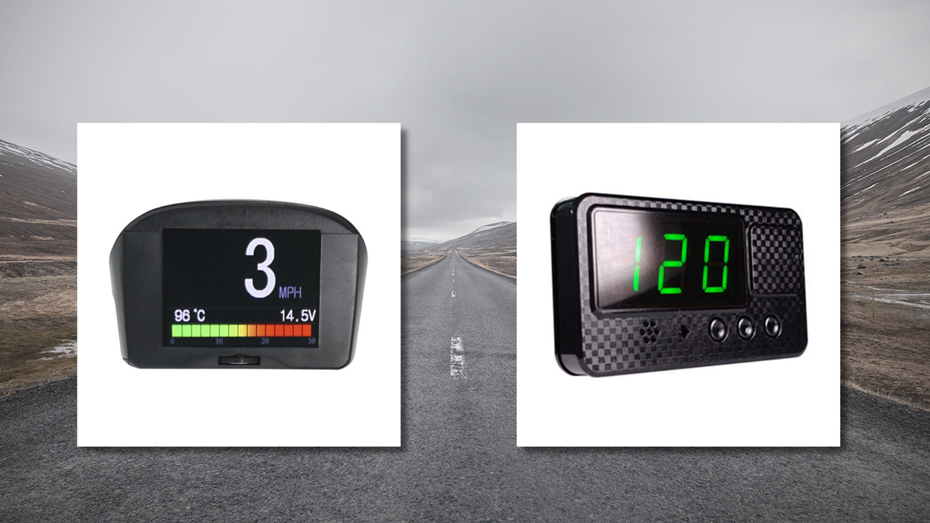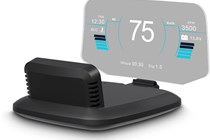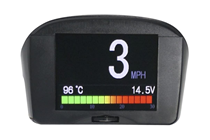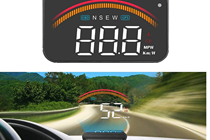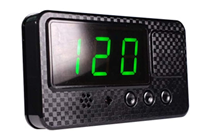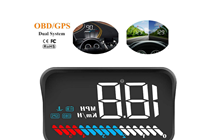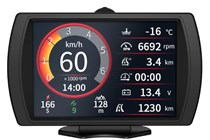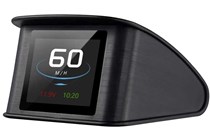A head-up display (HUD) is a small projector that beams important details onto your car’s windscreen, like your current speed. The logic behind a HUD is known as the eyes-on-the-road-benefit. By removing the need to look down and away from the road to check your speed, it allows drivers to focus on the road more. In short, a HUD is designed to promote safety.
Many cars now offer it as an optional extra, including smaller cars like the Mazda 2 and Mini Hatch. It is, however, an expensive optional extra, costing more than £300 for a Mini Hatch.
There is a large array of good quality aftermarket HUDs available that will do the job for far less than a manufacturer would charge. There are two types of aftermarket HUD available; OBD-II and GPS. The GPS models are universal and don’t need plugging into your car, whilst and OBD-II requires an OBD-II port for it to work.
We’ve looked at what’s available and come up with our picks of car head-up displays.
Pros
- Offers all the essentials
Cons
- Doesn’t display as many readings as other OBD-II models
Pros
- Multiple display options
Cons
- Instructions could be better
Pros
- OBD and GPS function
Cons
- OBD only works with certain vehicles
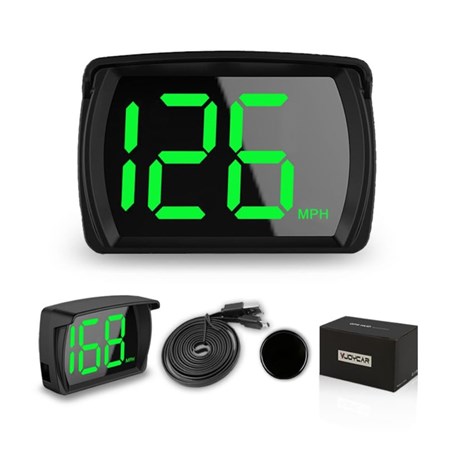

Pros
- Easy to read screen
Cons
- No extra functions
Pros
- Various safety alarms
Cons
- Requires OBD II port for best performance
Related: The best car first aid kits you need in your boot | The best roof boxes
FAQs - What you need to know when looking for a HUD
-
How old is your car?
Any petrol car sold in Europe from 2001 is required to have an OBD-II connector by law, so any modern(ish) car will be compatible with an OBD-II HUD. On the other hand, a GPS HUD is totally universal. So long as you can power it (and it has a satellite connection), it will display your speed easily. Perfect for an older car that doesn't have an OBD-II port.
-
What readouts do you want?
If you're more interested in just your speed, then a basic GPS model will be fine for you. If you want information about the condition and status of your car (e.g. your engine temperature), then you'll be wanting to purchase an OBD-II model that you can plug into your car to get the correct readings.
-
Where will you be driving?
GPS based HUDs need a satellite connection in order to work and can lag if the connection is poor. If you plan to take your car to very secluded areas or drive through long tunnels, be prepared for your HUD to stop working. Obviously, you'll still have your speedometer to let you know how fast you're driving, but it is still worth thinking about.
Just so you know, we may receive a commission or other compensation from the links on this website - read why you should trust us.


